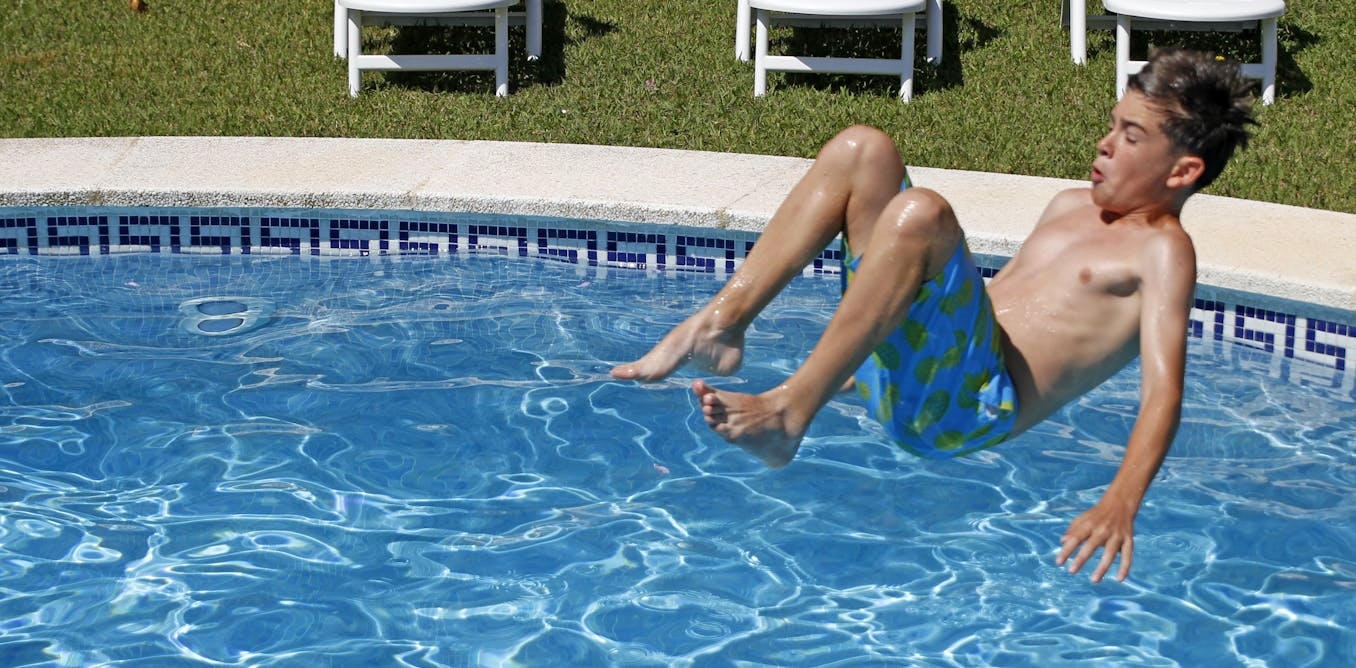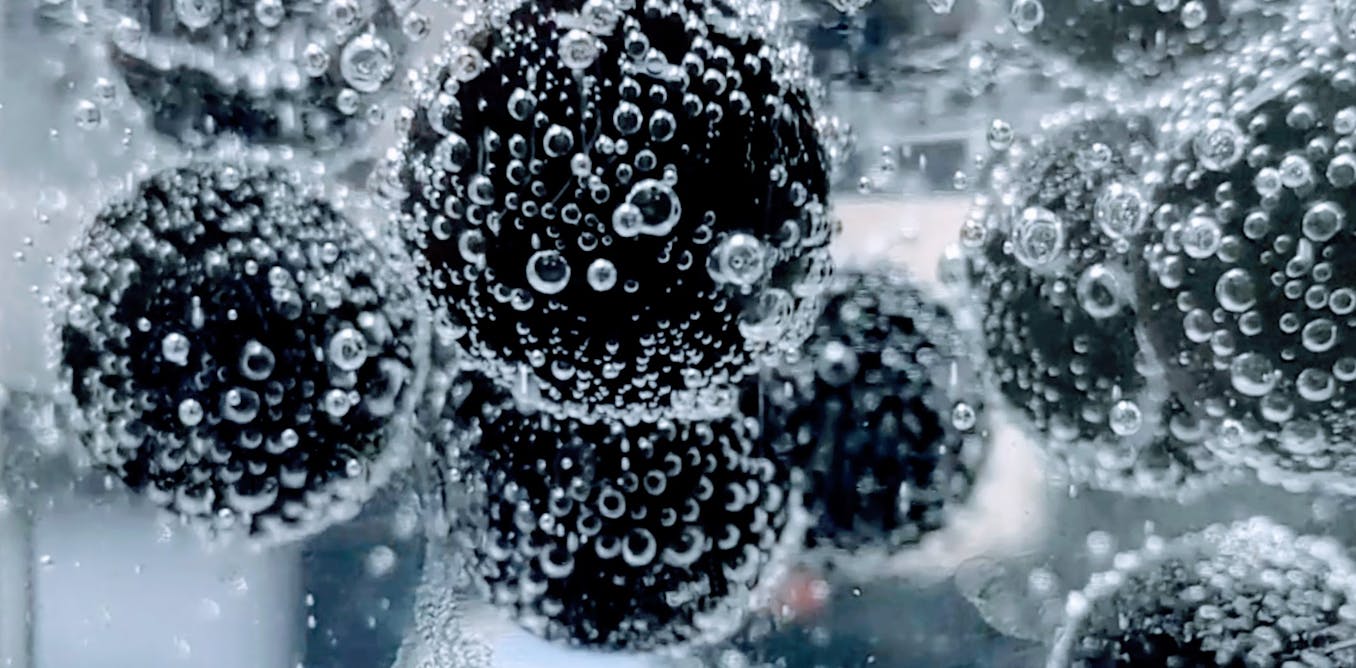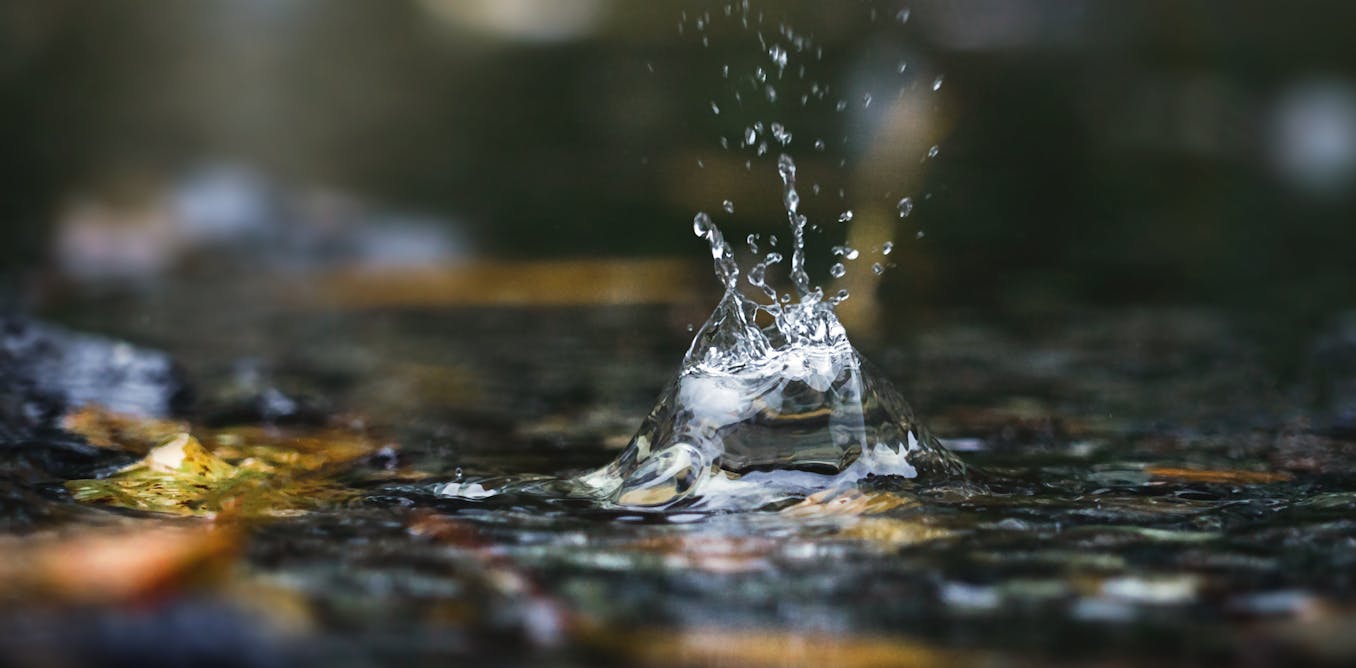The science behind airplane deicing – a mechanical engineer explains how chemistry and physics make flying a more uplifting experience
Waiting for your plane to get deiced may be annoying, but it’s an essential safety step in chilly conditions.
Feb. 28, 2025 • ~10 min
‘Dancing’ raisins − a simple kitchen experiment reveals how objects can extract energy from their environment and come to life
Want to bring extra life to a glass of champagne or soda water? Physicists will tell you to drop in a small object, such as a berry or raisin.
May 13, 2024 • ~9 min
Tiny water-walking bugs provide scientists with insights on how microplastics are pushed underwater
Microplastic pollution is a growing problem − one lab is looking at tiny insects as inspiration for how these pollutants might move through water.
Jan. 22, 2024 • ~5 min
Otters, beavers and other semiaquatic mammals keep clean underwater, thanks to their flexible fur
The bottoms of boats and docks can accumulate lots of dirt, but semiaquatic animals like otters avoid having ‘fouled’ fur. Their secret could one day help keep underwater infrastructure clean.
Jan. 11, 2024 • ~4 min
How cancer cells move and metastasize is influenced by the fluids surrounding them – understanding how tumors migrate can help stop their spread
Counterintuitively, cells move faster in thicker fluids. New research on breast cancer cells explains why, and reveals the role that fluid viscosity plays in metastasis.
Jan. 9, 2023 • ~7 min
Deepfake audio has a tell – researchers use fluid dynamics to spot artificial imposter voices
AI-generated voice-alikes can be indistinguishable from the real person’s speech to the human ear. A computer model that gives voice to the dinosaurs turns out to be a good way to tell the difference.
Sept. 20, 2022 • ~6 min
Expert in fluid dynamics explains how to reduce the risk of COVID-19 airborne transmission inside a car
Keeping windows open while driving at a moderate speed can increase airflow inside the cabin of the car, but which ones should you keep open?
Jan. 27, 2021 • ~4 min
Aerosols are a bigger coronavirus threat than WHO guidelines suggest – here's what you need to know
More than 200 scientists wrote to the WHO, warning about aerosol transmission of the coronavirus. The WHO has since acknowledged the evidence but hasn't change its advice yet.
July 9, 2020 • ~9 min
/
1








